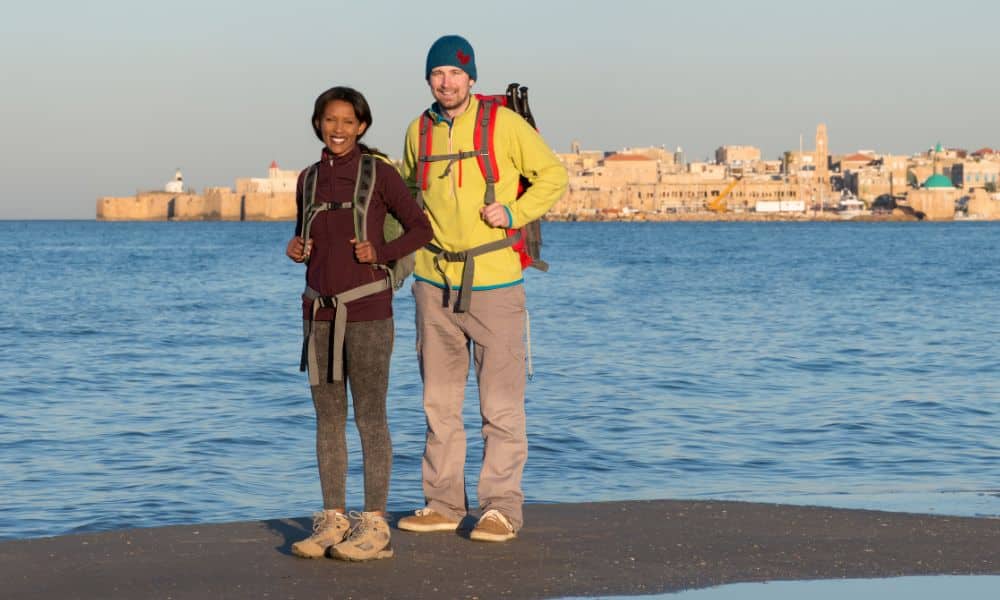So you’re going on your first backpacking adventure and need help to be prepared as prepared can be.
And that’s a good thing.
Backpacking is not something you just do, as it does require some thinking and lots of preparation.
Try heading out there without knowing what to bring and what to expect, and things will get complicated really fast.
Let’s not overcomplicate things either, and let’s go over some of the things you need to know before you head out on your first adventure.
If this is your first time backpacking, this guide to backing should help you get through things much easier than most.
Table of Contents
Understanding Backpacking Basics
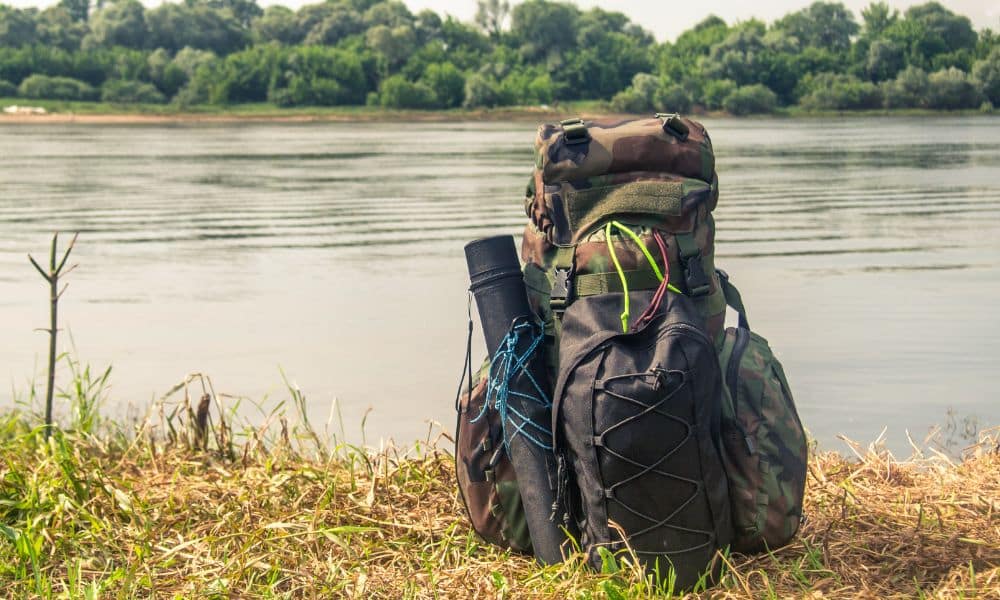
When it comes to backpacking, there are a few basic things you need to know before you hit the trail. Here are some key points to keep in mind:
Gear
Backpacking requires specialized gear, but you don’t need to go crazy buying everything all at once. For starters, here are the essentials:
- Backpack: You’ll need a backpack that fits your body well and can hold all your gear. Look for one with a 50-70 liters capacity for a multi-day trip.
- Tent: A good tent will keep you dry and comfortable. Look for one that’s lightweight and easy to set up.
- Sleeping bag: Choose a sleeping bag rated for the lowest temperature you expect to encounter on your trip.
- Sleeping pad: A sleeping pad will provide insulation and cushioning between you and the ground.
- Stove and cookware: You’ll need a stove and cookware to prepare meals on the trail.
- Water filter: A water filter will allow you to safely drink water from streams and other sources.
- Clothing: Dress in layers and bring rain gear, even if the forecast looks good.
Food
You’ll need to bring enough food to sustain you on your trip. Plan on 2-3 pounds of food per day. Choose lightweight, high-energy foods like trail mix, nuts, and dehydrated meals. Don’t forget to bring a stove and cookware to prepare your meals.
Safety
Backpacking can be risky, so it’s important to take safety seriously. Here are some key safety tips:
- Plan your route and share it with someone who isn’t going on the trip.
- Bring a map and compass, and know how to use them.
- Be prepared for changes in weather and trail conditions.
- Know how to signal for help in case of an emergency.
Leave No Trace
When you’re backpacking, it’s important to minimize your impact on the environment. Follow these Leave No Trace principles:
Leave No Trace (lnt.org)
- Plan ahead and prepare
- Travel and camp on durable surfaces
- Dispose of waste properly
- Leave what you find
- Minimize campfire impact
- Respect wildlife
- Be considerate of others
Following these basic guidelines will make you well on your way to a successful backpacking trip.
Choosing the Right Backpack
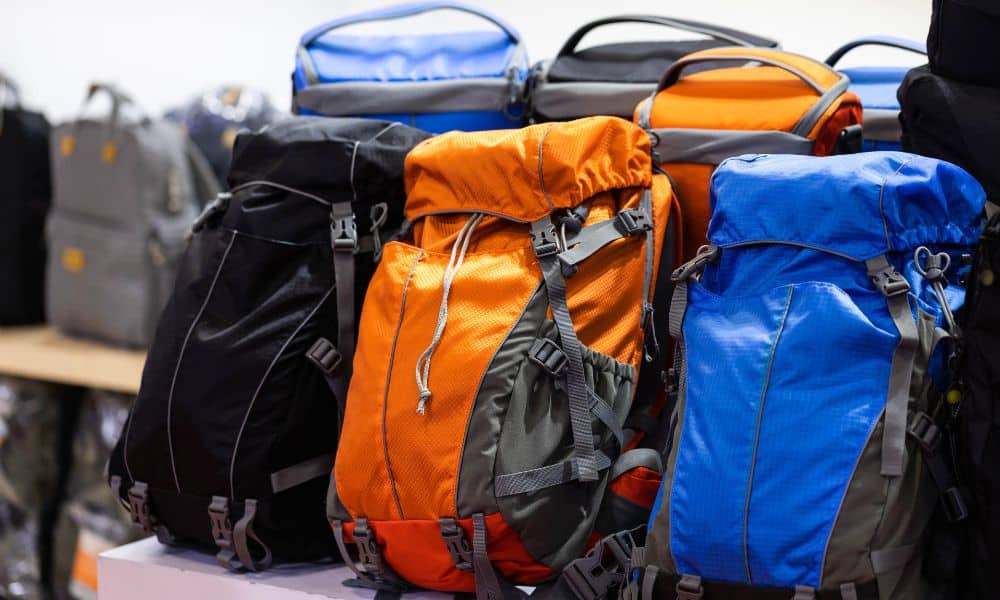
When it comes to backpacking, choosing the right backpack is crucial to ensure a comfortable and enjoyable trip. Here are some factors to consider when selecting a backpack:
Size and Fit
The size of your backpack will depend on your trip’s length and the gear you plan to carry. A backpack with a capacity of 30-50 liters is ideal for a weekend trip, while a backpack with a capacity of 50-80 liters is suitable for longer trips.
It’s important to choose a backpack that fits your body well. Measure your torso length and choose a backpack with an adjustable suspension system to ensure a proper fit. The hip belt should sit comfortably on your hips, and the shoulder straps should fit snugly without digging into your skin.
Material and Durability
Backpacks are made of various materials, including nylon, polyester, and canvas. Nylon is lightweight and durable, making it a popular choice for backpacks. Polyester is also lightweight but not as durable as nylon. Canvas is heavy but durable and offers excellent protection against abrasion.
When choosing a backpack, consider the durability of the material and the stitching. Look for backpacks with reinforced stitching and durable zippers to ensure they can withstand the wear and tear of backpacking.
Comfort and Support
A comfortable backpack is essential for a successful backpacking trip. Look for backpacks with padded shoulder straps and a padded hip belt to distribute the backpack’s weight evenly. A well-ventilated back panel will help keep you cool and dry during long hikes.
Consider the type of backpacking you plan to do and choose a backpack with the appropriate support system. A backpack with an internal frame is ideal for carrying heavy loads and provides excellent support. A backpack with an external frame is better suited for carrying bulky items and offers better ventilation.
When choosing a backpack, consider the size and fit, material and durability, and comfort and support. A well-chosen backpack will make your backpacking trip more comfortable and enjoyable.
Essential Backpacking Gear
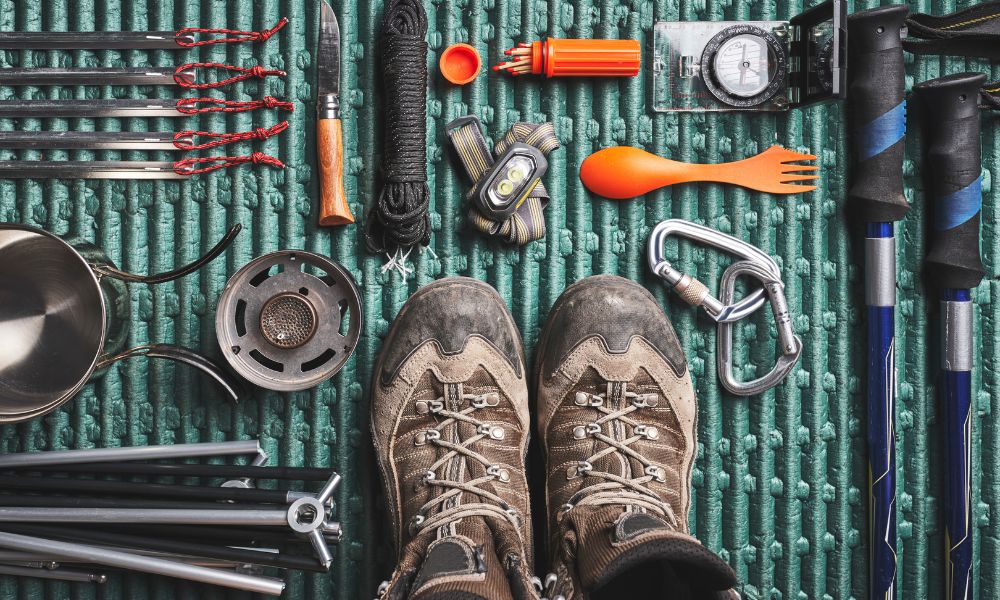
When it comes to backpacking, having the right gear is essential. Here are the key items you’ll need to pack for a successful trip:
Navigation Tools
When you’re out in the wilderness, it’s important to have reliable navigation tools. Here are a few essentials:
- Map and compass: Always carry a detailed map and compass, and ensure you know how to use them.
- GPS device: A GPS device can be a useful backup to your map and compass, but don’t rely on it entirely.
- Personal locator beacon (PLB): A PLB can be a lifesaver in an emergency, but only use it in a true emergency.
Shelter
Your shelter is your home away from home, so make sure you choose one that’s comfortable, durable, and easy to set up. Here are a few options:
- Tent: A tent is a classic choice for backpackers, offering protection from the elements and privacy.
- Hammock: A hammock can be a lightweight and comfortable option if you’re hiking in a wooded area.
- Tarp: A tarp is a versatile option used as a shelter, ground cover, or even a makeshift poncho.
Food and Water
Staying hydrated and well-fed is crucial when you’re out on the trail. Here are a few tips:
- Water filter or purification tablets: Always carry a way to purify water, such as a filter or tablets.
- Lightweight stove: A lightweight stove can be a great way to cook food and boil water on the trail.
- High-energy snacks: Pack plenty of high-energy snacks like trail mix, energy bars, and jerky to keep you fueled throughout the day.
Remember, the key to a successful backpacking trip is to pack light but smart. Choose lightweight, durable, and versatile gear, and always be prepared for the unexpected.
Planning Your Backpacking Trip
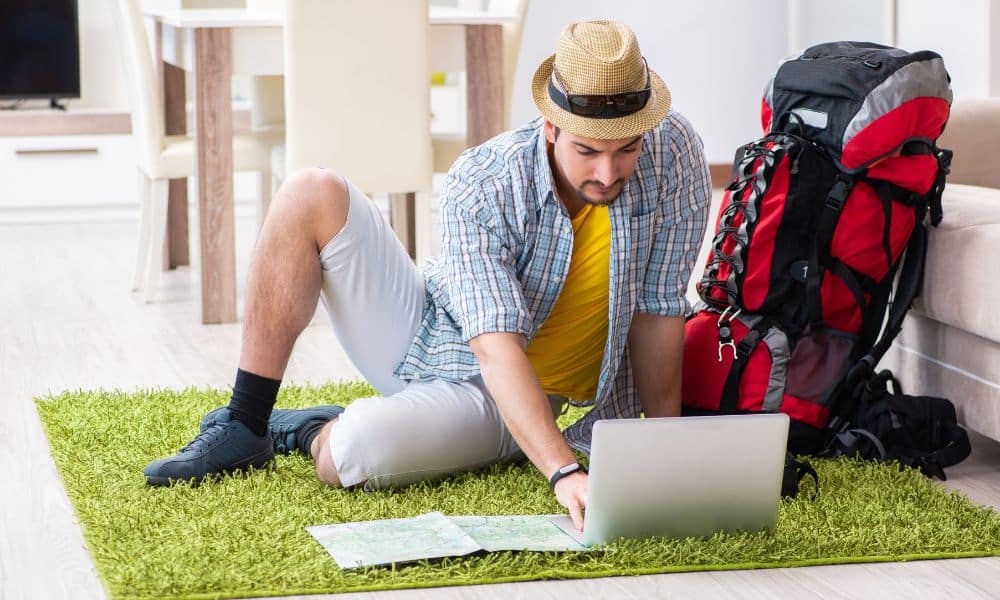
A few important things must be considered when planning your backpacking trip to ensure a successful and enjoyable experience. In this section, we will cover the key factors to consider when planning your backpacking trip, including destination selection, route planning, and weather considerations.
Destination Selection
The first step in planning your backpacking trip is selecting your destination. Consider your skill level, trip length, and personal interests when choosing a destination. Research the area you are considering and ensure it offers the activities and scenery you want.
Consider the following factors when selecting your destination:
- Distance from home
- Terrain difficulty
- Altitude
- Availability of water sources
- Wildlife and vegetation
Route Planning
Once you have selected your destination, it’s time to plan your route. A well-planned route can make all the difference in the success of your trip. Make sure to research the area and create a detailed route map. Take into account the following factors when planning your route:
- Distance and elevation gain
- Trail conditions
- Water sources and availability
- Campsite locations
- Emergency exit routes
Weather Considerations
Weather can play a significant role in the success of your backpacking trip. Make sure to check the weather forecast for your destination and plan accordingly. Consider the following factors when preparing for weather conditions:
- Temperature range
- Precipitation
- Wind speed
- Sun exposure
In conclusion, planning your backpacking trip is crucial for a successful and enjoyable experience. Take the time to research and consider your destination, plan your route, and prepare for weather conditions to ensure a safe and comfortable trip.
And don’t forget to bring some sunblock, especially if you burn easily. You’re already exerting energy and losing fluids, so it will make it a lot easier for you to burn. There are other ways to prevent sunburn, so don’t forget to check out this guide.
Backpacking Safety Tips

Backpacking is an exciting and adventurous activity, but it is important to prioritize safety to ensure a successful trip. Here are some safety tips to keep in mind:
First Aid
Accidents can happen anytime, anywhere. Packaging a first aid kit and knowing how to use it is important. Your first aid kit should include the following:
- Band-aids of various sizes
- Gauze pads and adhesive tape
- Antiseptic wipes or solution
- Pain relievers
- Tweezers and scissors
- Insect repellent
Wildlife Awareness
When backpacking, you are entering the natural habitat of many wild animals. It is important to be aware of the potential dangers and take precautions to avoid them. Here are some tips to keep in mind:
- Keep a safe distance from wildlife. Never approach or feed them.
- Store food and trash properly to avoid attracting bears and other animals.
- Make noise while hiking to alert animals of your presence.
- If you encounter a bear, remain calm and slowly back away. Do not run or turn your back on the bear.
Leave No Trace Principles
Leave No Trace is a set of principles that promotes responsible outdoor ethics. The goal is to minimize the impact of human activities on the environment. Here are some of the key principles to follow:
- Pack out all trash and waste. Do not bury or burn it.
- Stay on designated trails to avoid damaging vegetation.
- Respect wildlife and their natural habitats.
- Camp at least 200 feet away from lakes and streams to avoid polluting the water.
By following these safety tips, you can enjoy your backpacking trip while minimizing the environmental risks and impact.
Improving Your Backpacking Skills
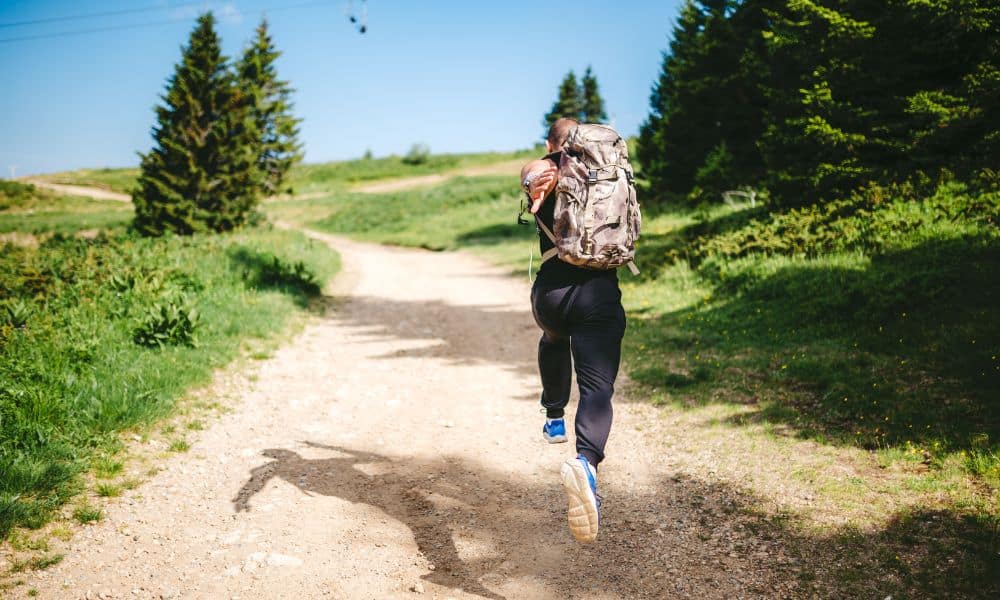
As a beginner backpacker, improving your skills is crucial for a safe and enjoyable trip. Here are some key areas to focus on when improving your backpacking skills.
Physical Preparation
Backpacking requires a certain level of physical fitness. You need to be able to carry a heavy backpack for extended periods, often over rough terrain. To improve your physical fitness, consider the following:
- Cardiovascular exercise: Running, cycling, or hiking are great ways to improve cardiovascular fitness.
- Strength training: Focus on building strength in your legs, core, and upper body to help carry your backpack and navigate rough terrain.
- Stretching: Stretching before and after your trip can help prevent injury and improve flexibility.
Navigation Skills
Navigating the wilderness can be challenging, but you can become proficient in map reading and orienteering with practice. Here are some tips to improve your navigation skills:
- Learn to read a map: Study topographic maps and practice interpreting contour lines, symbols, and scale.
- Use a compass: Learn how to use a compass to orient your map and take bearings.
- Practice orienteering: Set up a park or wilderness area course and practice navigating using your map and compass.
Camp Setup
Setting up camp is an essential part of backpacking. A well-planned campsite can make your trip more comfortable and enjoyable. Here are some tips to improve your camp setup skills:
- Choose a good site: Look for a flat, dry area away from hazards like falling trees or flash floods.
- Set up your tent: Practice setting up your tent before your trip, and ensure you have all the necessary equipment.
- Organize your gear: Keep your gear organized and easily accessible. Use a checklist to make sure you don’t forget anything.
Improving your backpacking skills takes practice and dedication, but you can become a confident and knowledgeable backpacker with time.
Follow This Beginner’s Guide to Backpacking and Succeed
Backpacking is a great way to get up and get out and, most especially, enjoy the great outdoors.
It’s very much fun but requires a lot of knowledge and responsibility.
In the end, it’s a way for you to enjoy yourself and get some exercise, so don’t try to overcomplicate things.
Understand the basics, remember to be safe, but remember to have fun and enjoy yourself.
I hope this beginner’s guide to backpacking has helped you in more ways than expected and that you have the time of your life.
Embrace the challenges, as those times when things didn’t go as planned will be the most memorable ones.
Until next time, enjoy the benefits of being outside, stay safe, and have fun!

